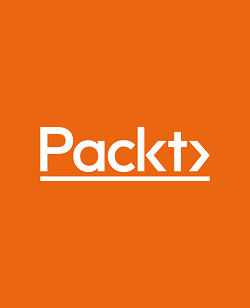-
Book Overview & Buying

-
Table Of Contents
-
Feedback & Rating

SAFe® for DevOps Practitioners
By :

SAFe® for DevOps Practitioners
By:
Overview of this book
Product development and release faces overlapping challenges due to the combined pressure of delivering high-quality products in shorter time-to-market cycles, along with maintaining proper operation and ensuring security in a complex high-tech environment. This calls for new ways of overcoming these challenges from design to development, to release, and beyond. SAFe® for DevOps Practitioners helps you use a DevOps approach with the Scaled Agile Framework and details how value streams help you resolve these challenges using examples and use cases.
The book begins by explaining how the CALMR approach makes DevOps effective in resolving product development roadblocks. Next, you’ll learn to apply value stream management to establish a value stream that enables product development flow, measure its effectiveness through appropriate feedback loops, and find ways of improving it. Finally, you’ll get to grips with implementing a continuous delivery pipeline that optimizes the value stream through four phases during release on demand. This book complements the latest SAFe DevOps courses, and you’ll find it useful while studying for the SAFe DevOps Practitioner (SDP) certification.
By the end of this DevOps book, you’ll have gained a clear understanding of how to achieve continuous execution and release on demand using DevOps and SAFe.
Table of Contents (21 chapters)
Preface
In Progress
| 0 / 9 sections completed |
0%
Chapter 1: Introducing SAFe® and DevOps
In Progress
| 0 / 8 sections completed |
0%
 Free Chapter
Free Chapter
Part 1 Approach – A Look at DevOps and SAFe® through CALMR
In Progress
| 0 / 1 sections completed |
0%
Chapter 2: Culture of Shared Responsibility
In Progress
| 0 / 8 sections completed |
0%
Chapter 3: Automation for Efficiency and Quality
In Progress
| 0 / 9 sections completed |
0%
Chapter 4: Leveraging Lean Flow to Keep the Work Moving
In Progress
| 0 / 9 sections completed |
0%
Chapter 5: Measuring the Process and Solution
In Progress
| 0 / 7 sections completed |
0%
Chapter 6: Recovering from Production Failures
In Progress
| 0 / 9 sections completed |
0%
Part 2:Implement – Moving Toward Value Streams
In Progress
| 0 / 1 sections completed |
0%
Chapter 7: Mapping Your Value Streams
In Progress
| 0 / 8 sections completed |
0%
Chapter 8: Measuring Value Stream Performance
In Progress
| 0 / 8 sections completed |
0%
Chapter 9: Moving to the Future with Continuous Learning
In Progress
| 0 / 7 sections completed |
0%
Part 3:Optimize – Enabling a Continuous Delivery Pipeline
In Progress
| 0 / 1 sections completed |
0%
Chapter 10: Continuous Exploration and Finding New Features
In Progress
| 0 / 8 sections completed |
0%
Chapter 11: Continuous Integration of Solution Development
In Progress
| 0 / 8 sections completed |
0%
Chapter 12: Continuous Deployment to Production
In Progress
| 0 / 8 sections completed |
0%
Chapter 13: Releasing on Demand to Realize Value
In Progress
| 0 / 8 sections completed |
0%
Chapter 14: Avoiding Pitfalls and Diving into the Future
In Progress
| 0 / 7 sections completed |
0%
Assessment Answers
In Progress
| 0 / 14 sections completed |
0%
Index
In Progress
| 0 / 2 sections completed |
0%
Other Books You May Enjoy
In Progress
| 0 / 4 sections completed |
0%
Customer Reviews
